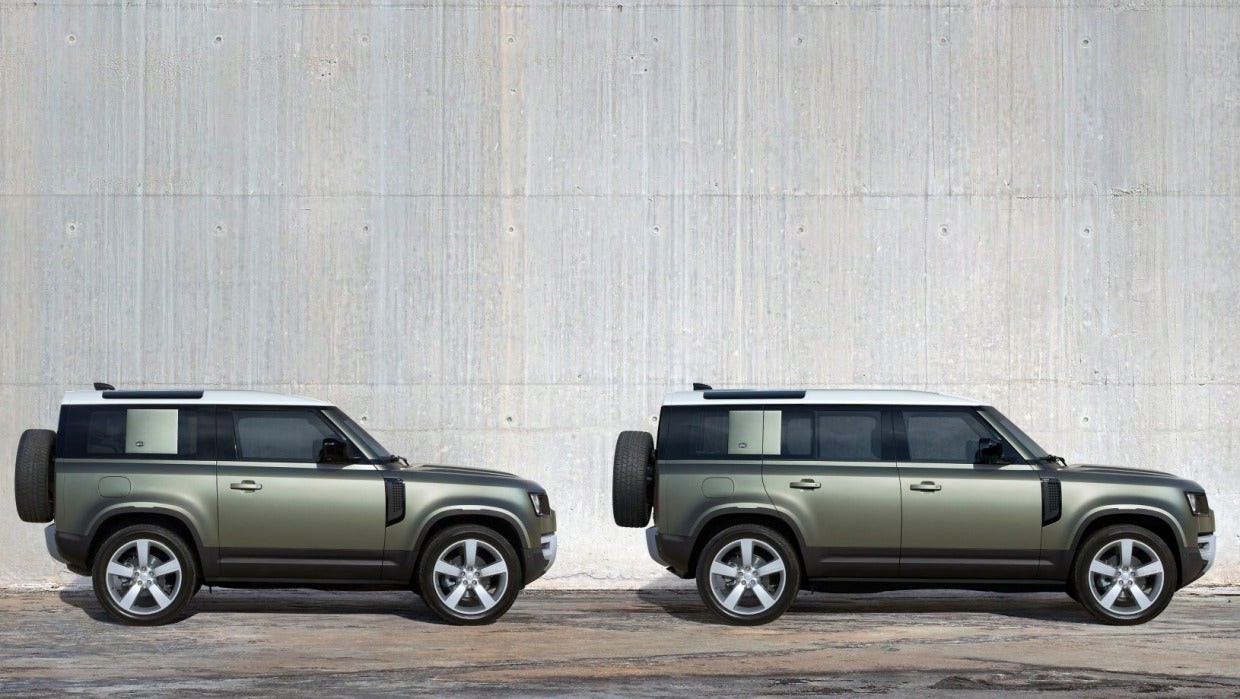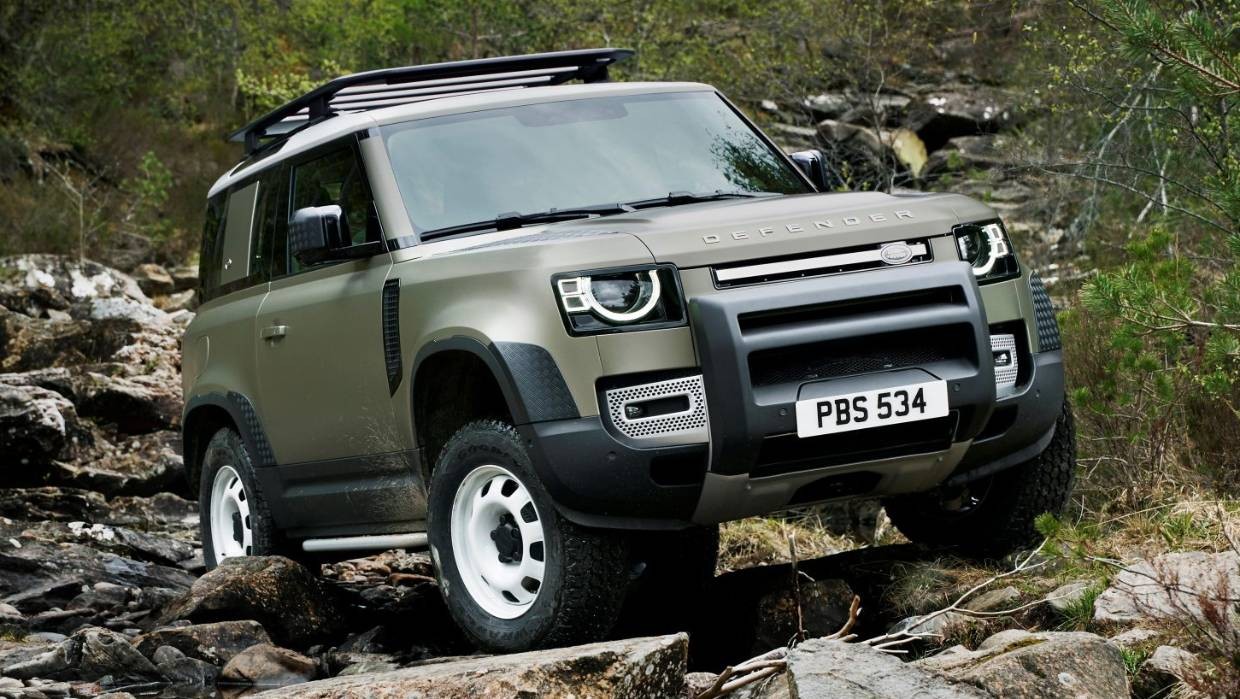
Mon, Feb 10, 2020 3:51 AM
The new Defender is all-new - not even the badge is shared with the old one. Here's what you need to know about the new Landy.
Where 90 and 110 used to refer to the wheelbase of the respective models, that is no longer the case - both have grown considerably (with the 90 up by 227mm and the 110 by 228mm), yet both share the same front and rear overhangs - the 435mm difference in length between the two is solely in the middle of the vehicle to allow for the 110's extra doors.

While the 90 (pictured left) will come standard with steel coil spring suspension, it will have the option of air suspension, while the 110 (pictured right) will get the air suspension set up as standard.
A 130 that will share the 110's wheelbase, but with a longer rear overhang is reportedly in the works, but Land Rover is not giving anything away on that yet. While there is no official word of a pick up at the moment, an engineer told 4x4 Australia that "There's the potential" for one at a later date.
Inside, the dash-mounted gear shifter allows for an optional central front 'jump' seat, which provides three-abreast seating across the front, meaning that the 110 offers five, six or 5+2 seating configurations, with a loadspace behind the second-row seats of up to 1,075 litres, and as much as 2,380-litres when the second row is folded. The Defender 90 will be able to accommodate up to six occupants.
The model range will comprise of Defender, First Edition and top of the range Defender X models, as well as standard, S and SE specification packs.
It will have a range of 4 and 6-cylinder engines: two 2.0-litre four-cylinder turbo-diesels, a 2.0-litre turbo-petrol and a 3.0-litre inline six-cylinder turbo-petrol with a mild hybrid electric system boosting performance.
While the company's V8s can apparently fit, there is no word on that ever happening, although a plug-in hybrid is definitely coming.
While it is very modern and high-tech, the new Defender still packs some serious off-road specs.
The new Defender has up to 291mm of ground clearance (on air suspension models, steel suspension models have 218mm), which is technically less than the old one, but the shift to a monocoque platform and independent rear suspension means it has a completely flat underside, with no diffs hanging down.
The Defender sits on what Land Rover is calling the D7x architecture, that is related to the D7 platform that forms the basis of the Range Rover, Discovery and Velar, but has been extensively re-engineered (the 'x' stands for 'extreme') for use in the Defender. Land Rover say that the D7x architecture is three times stiffer than a traditional body-on-frame design.
All models come standard with permanent dual-range all-wheel drive and an eight-speed automatic transmission, a centre differential and the option of an active locking rear differential.
All models will be capable of wading through 900mm of water but engineers even say it is capable of going deeper and, to reduce the risk of floating, the doors can be cracked to let water in, ruining the carpet, but the electrics will be fine - the entire electrical system is IP67 certified, meaning that it can be submerged in a metre of fresh water for an hour with no issues.

The Defender's approach, breakover and departure angles are 38, 28 and 40 degrees respectively, but this is for the air suspension models at full off-road height.
It's also got lots of tech. Forget the old basic one, the new Defender has got a comfortable, high-tech interior.
If you were hoping the new Defender would be as agricultural as the old one, prepare to be massively disappointed.
As well as an advanced terrain response system, the Defender also gets a "wade" mode that to make the most of that impressive 900mm wading depth. It also scores Land Rover's ClearSight Ground View technology that displays the area usually hidden by the bonnet, directly ahead of the front wheels, on the central touchscreen.
The Defender introduces Land Rover's new Pivi Pro infotainment system a next-generation touchscreen system that the company says requires fewer inputs to perform frequently used tasks, while its always-on design "guarantees almost instant responses."
In addition, the new Defender also gets Software-Over-The-Air (SOTA) technology, with 14 individual modules capable of receiving remote updates.
The largest range of options offered on a Defender includes these nifty side pods for wet and muddy gear. Or plates.
Land Rover will offer four accessory packs with the Defender - Explorer, Adventure, Country and Urban - and the company says each give it "a distinct character with a specially selected range of enhancements."
As well as the packs, it will also offer the "widest choice of individual accessories ever assembled for a new Land Rover", including everything from a remote control electric winch that is integrated behind the number plate and a rooftop tent and inflatable waterproof awnings, to more conventional options like towbars and roof racks.
The Defender is engineered to carry up to 168kg on its roof when moving and up to 300kg when static, meaning two people can sleep in that rooftop tent. It also has a towing capacity of 3,500kg.
Because they actually want you to get the Defender dirty, Land Rover will be offering a factory-fitted wrap in matte colours as an option. The company says the wrap has "scratch recovery" properties and can be removed and replaced during the life of the car. It is also fully recyclable.







